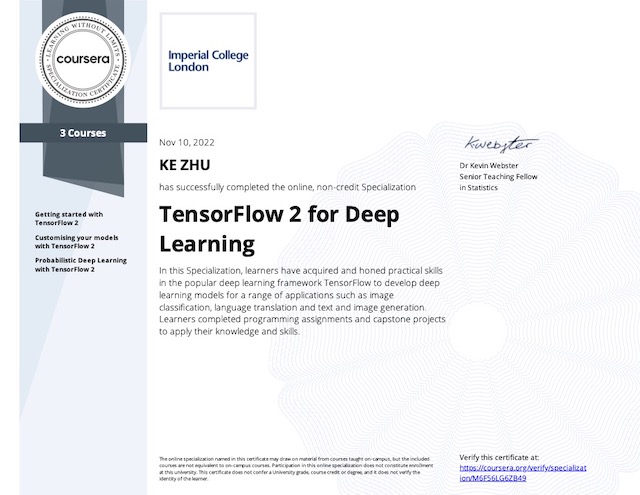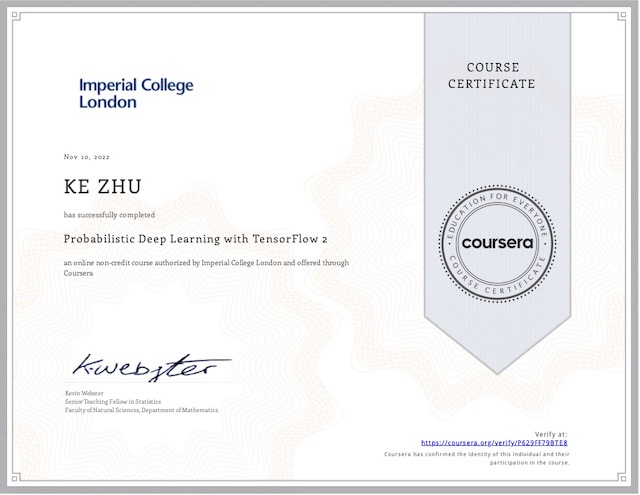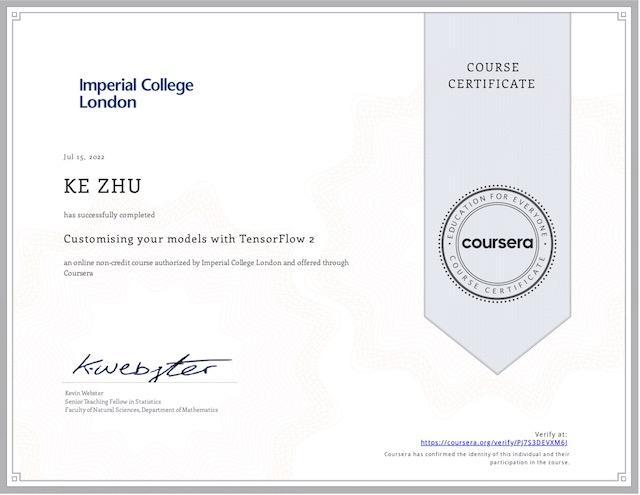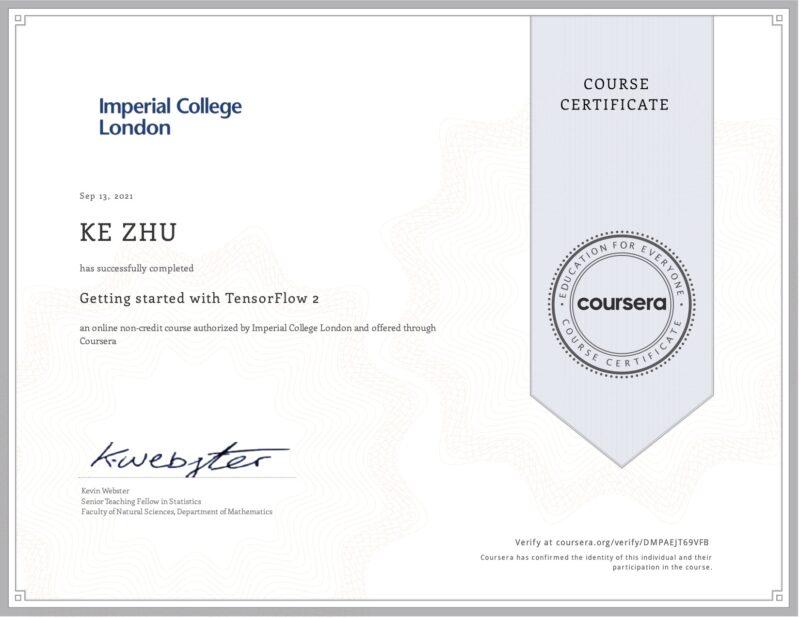TensorFlow 2 for Deep Learning Specialization Imperial College London Hooray! Now I completed the whole specialization! TensorFlow skill is definitely something needs years of endeavor to build. This specialization probably is not suitable for new comers, since many topics are really for those with solid knowledge of probability and Python programming skills. However completing these…
Tag: TensorFlow 2 for Deep Learning Specialization
My #118 certificate from Coursera
Probabilistic Deep Learning with TensorFlow 2Imperial College London The focus of this course is the TensorFlow Probability library. Spoiler alert! Probability distributions are important factors you need to consider. From now on, building model is not only as simple as adding layers and squeezing your GPU to calculate various weights. This is challenging course. From…
Variational Autoencoders
The Variational Autoencoder (VAE) is an algorithm for inference and learning in a latent variable generative model. In it’s simplest form, it’s an unsupervised learning algorithm and like normalizing flows, the generative model can be used to create new examples similar to the data set. However, unlike normalizing flows, the generative model is not invertible…
TensorFlow: Normalizing Flow Models
Generative models are a kind of statistical model that aims to learn the underlying data distribution itself. If a generative model is able to capture the underlying distribution of the data well, then it’s able to produce new instances that could plausibly have come from the same dataset. You could use for anomaly detection, telling you whether a given instance…
TensorFlow: Probabilistic Deep Learning Models
Unfortunately, deep learning models aren’t always accurate, especially when asked to make predictions on new data points that are dissimilar to the data that they were trained on. The insight here is that it’s important to models to be able to assign higher levels of uncertainty to incorrect predictions. We want our deep learning models to know what they don’t know. The probabilistic…
Distribution Objects in TensorFlow Probability
We’ll be making extensive use of the TensorFlow Probability library to help us develop probabilistic deep learning models. The distribution objects from the library are the vital building blocks because they capture the essential operations on probability distributions. We are going to use them when building probabilistic deep learning models in TensorFlow. Univariate Distributions Within the tfp…
My #99 course certificate from Coursera
Customising Your Models with TensorFlow 2Imperial College London I highly recommend this course to everyone who is willing to be using TensorFlow 2. I have been using TensorFlow for years, but I still learnec a lot from it. One caveat is that this course actually is not an easy one, it won’t teach your what…
Customizing Models, Layers and Training Loops
Subclassing Models The model subclassing and custom layers give you even more control over how the model is constructed, and can be thought of as an even lower level API than the functional API. However with more flexibility comes more opportunity for bugs. In order to use model subclassing, we first import the Model class…
Sequential Data and Recurrent Neural Networks
Sequential data is data that has a natural sequential structure built into it, like text data or audio data. There are various network architectures and layers that we can use to make predictions from sequence data. However sequence data is often unstructured and not as uniform as other datasets. Preprocessing Sequential Data Each sequence example…
Keras and Tensorflow Datasets
Data pipelines are for loading, transforming, and filtering a wide range of different data for use in your models. Broadly speaking there are two ways to handle our data pipeline: These two modules together offer some powerful methods for managing data and building an effective workflow. Keras Datasets The Keras datasets give us a really…
The Keras Functional API
The reason you might want to use the Functional API (instead of the Sequential API) is if you need more flexibility. For example, you are using: multiple inputs and outputs in a multitask learning model, or conditioning variables. complicated non-linear topology with layers feeding to multiple other layers. With the Sequential API, we didn’t have…
My #67 course certificate from Coursera
Getting started with TensorFlow 2Imperial College London Wow this is a wonderful course on Tensorflow! The professor and lecturers directly teach how to write code to complete certain tasks, piece-by-piece and step-by-step. Upon the moment of completing all programming assignments you would certainly gain Tensorflow skills and be confident in your next real job. You’d…











